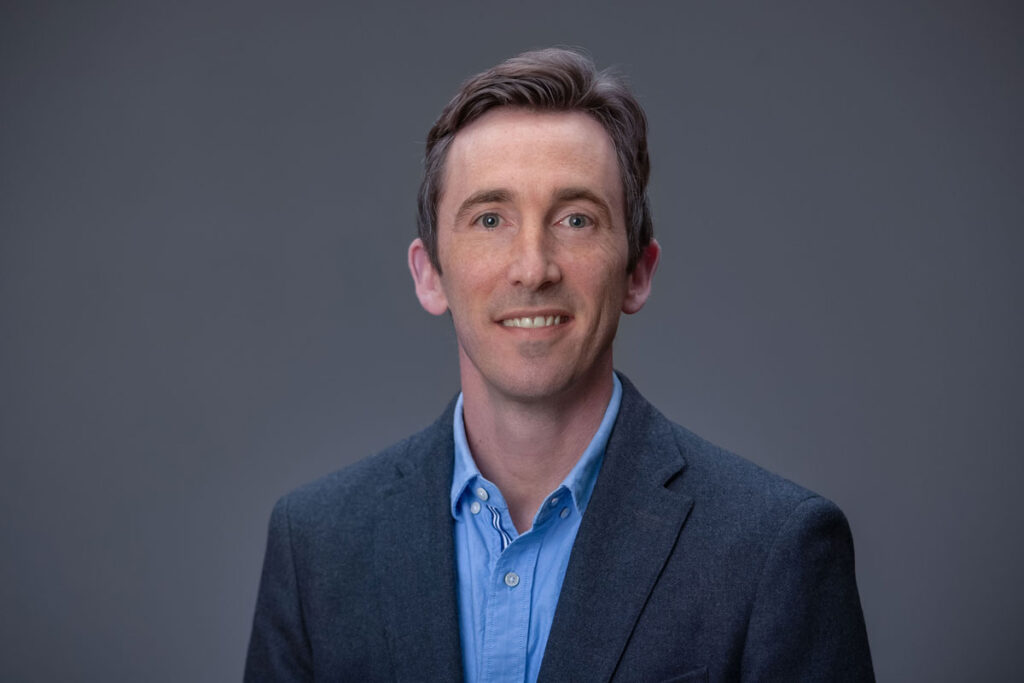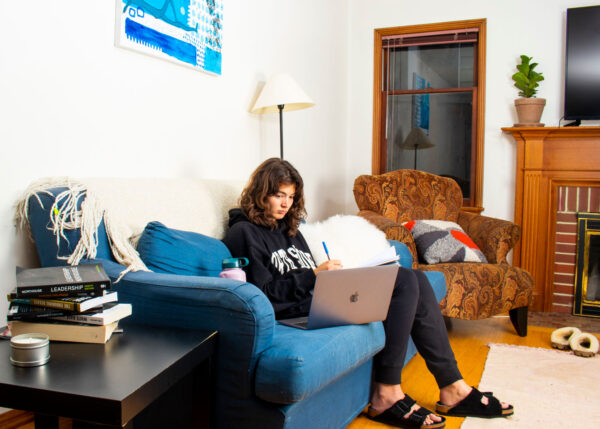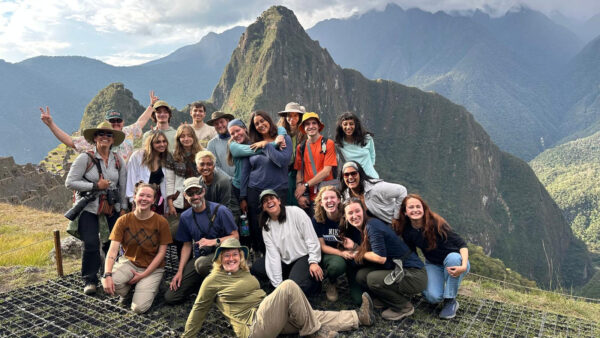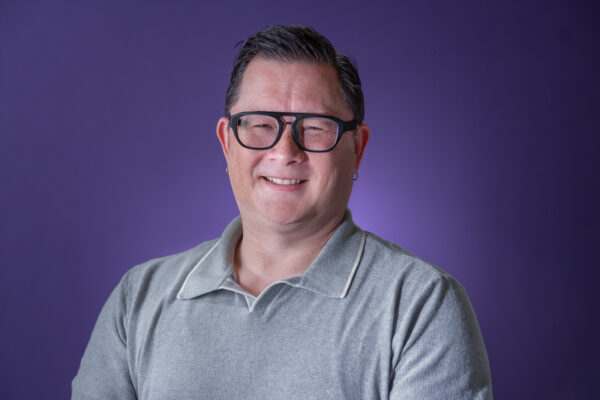Since the COVID-19 pandemic, various aspects of life — from work and school to health care and events — have become increasingly available in virtual formats.
Remote learning, however, existed long before it came into the spotlight as a matter of public discussion during lockdown.
For Dr. Joseph Ferrare, his interest in the subject, too, began years earlier as part of his research into public policy around the issue of school choice. Among the alternatives to traditional K-12 public education, he has noted a quiet rise in virtual charter schools — a trend made even more popular by the COVID-era remote learning boom.
“During COVID, a whole new model of remote instruction came about as we were just adapting to the needs of the pandemic, but virtual schools are very different in that they have an infrastructure in place and teachers who are plugged into this proprietary virtual environment,” said Ferrare, an associate professor in the University of Washington Bothell’s School of Interdisciplinary Arts & Sciences. “I’m very interested in how technology and the for-profit model is changing education and how it affects the student experience.”
Ferrare explores this topic in his latest published research, “The Impacts of Virtual Charter High Schools on Secondary and Postsecondary Outcomes: Opening Up the Black Box.”
A vehicle to social mobility
A love for education was instilled in Ferrare growing up. His father was a teacher, and Ferrare planned to someday follow in his footsteps. While studying political science at Iowa State University, his desire to teach grew to include a passion for how public policy shapes the education system.

He credits two of his professors for giving him a taste for looking at education through a research lens. Under one professor, he researched grassroots policy movements by investigating the intersection of migrant communities and how public schools in Iowa worked to meet their needs. Another professor introduced him to more philosophical literature around education — how the way schools are structured can have broader social, political and economic implications.
“That was my first exposure to the research and system-level aspects of education, and that really resonated with my sensibilities around public education that I got from my dad,” Ferrare said. “I could see for both my parents what public education did for them. They both grew up in Italian immigrant families with parents who had limited education. For my dad in particular, education was a vehicle to social mobility. To see that then connected to experiences I had with my professors as an undergraduate, I started to gain a passion for wanting to explore that more in depth.”
He focused his doctoral research on applying data science methods to the study of education. It was in his Ph.D. program that he also became interested in the alternatives to traditional public education, such as charter schools.
Indicators of success
Several years ago, Ferrare reconnected with Dr. Joseph Waddington — a former colleague from the University of Kentucky, where Ferrare taught before coming to UW Bothell — over their shared interest in charter schools. Waddington had just joined the faculty at the University of Notre Dame in South Bend, Indiana, an ideal location for research related to school choice, Ferrare said.
“If you’re interested in school choice, Indiana’s the place to study it. They have a huge charter school sector, including an enormous virtual charter school sector as well as one of the largest school voucher programs,” Ferrare said. “It’s basically the ‘Wild West’ of school choice. They allow everything.”
Also appealing for their purposes, Ferrare added, is the fact that Indiana’s school data is openly available to researchers — something not many states offer.
While previous studies looked at test scores as an indicator of success, Ferrare and his fellow researchers wanted to know more about how students performed over time. By using the de-identified data, they could compare students who transferred to virtual charter schools against their peers who remained in brick-and-mortar high schools. To avoid conflicting information from remote learning during the coronavirus pandemic, the study used only data from an 11-year period before 2020.
They focused on three major points: high school graduation, high school dropout and college enrollment. What they discovered was an overwhelmingly negative impact on all three counts among the students who transferred to virtual charter schools.
The study found that students from virtual charter high schools were 12.6% less likely to graduate high school in four years and 9.7% more likely to drop out. These students also had lower college enrollment, particularly at four-year institutions.
The business of learning
Wanting to delve deeper into what could account for these poorer student outcomes, the team looked at several factors. The first was the charter school difference, but among brick-and-mortar schools, Ferrare said, there is statistically no significant difference between charter high schools when matched against traditional public schools.
One factor unique among the virtual charter schools was the class sizes. When compared against a median class size of 24.5 in traditional schools, the virtual charter schools were found to have a median of 180 students to a class. The study found that these extremely large class sizes could account for about three-quarters of the increased rates of high school dropout.
“Class size has always been a strong associating factor in students’ success, and the research supports that,” Ferrare said. He noted that, while they could only speculate as to why the class sizes would be so large, cost was a likely answer.
“A lot of the support for charter schools comes ostensibly from the argument that public schools should be run more like businesses. And if the argument is that running our schools more like businesses will lead to better student outcomes, we certainly don’t find any such evidence here. We actually found that these are some of the worst student outcomes you will see in education literature.”
To manage classrooms of this size, Ferrare said that teachers become more reliant on static content and self-paced modules, as opposed to curriculum that engages the class together or students one-to-one. The use of artificial intelligence in remote learning environments is also increasing. The lower academic rigor of these modes also likely accounts for the reduction in college enrollment, he said.
“When you support and bolster student academic success, you’re helping students to finish school, go to college, pay taxes, serve their community and contribute as citizens.”
Dr. Joseph Ferrare, associate professor, School of Interdisciplinary Arts & Sciences
The public value of education
There’s no sign that these virtual charter schools are going away anytime soon, according to Ferrare. In fact, they continue to expand in the current political climate amid rollbacks in federal funding to public education.
“For the public to be investing in these schools, there should be some benefit or return on investment, and there isn’t,” he said. “Nothing good comes from a 12.6% reduction in high school graduation. A whole host of negative things happen at an individual level related to health, crime and lifetime earnings, but also at a public level this correlates with things like reduced tax revenue and an increased public infrastructural burden.”
Ferrare said he hopes that his research will help stimulate broader engagement among the public — not just the parents of children in K-12 schools.
“When you support and bolster student academic success, you’re helping students to finish school, go to college, pay taxes, serve their community and contribute as citizens,” he said. “That’s something that everyone can be involved in, regardless of whether you’re a parent or not. If you are a voter, you have a stake in these schools and how they operate because they have an effect on our communities.”
As he continues exploring the broader landscape of digital learning environments, Ferrare is now working on a new study examining the impacts of remote learning during the pandemic and how that compares to virtual schools.



